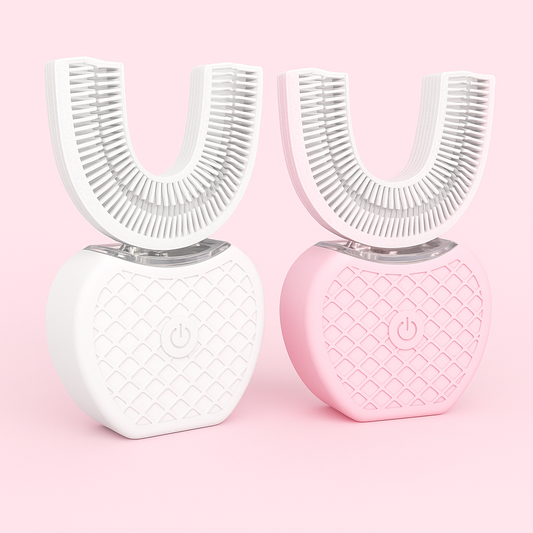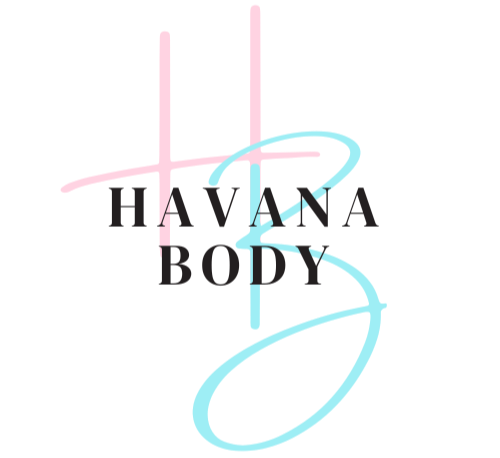Introduction: A New Way to Whiten — Fluoride-Free, Science-Forward
Want whiter teeth without relying on fluoride? You're not alone. In 2025 more people are exploring fluoride-free oral-care routines that prioritize gum health, reduced sensitivity, and natural plaque control. A fluoride-free whitening kit built around niacinamide (vitamin B3) and xylitol toothpaste can deliver healthier-looking teeth while addressing the root causes of surface staining: plaque, inflammation, and enamel wear.
This comprehensive guide explains how niacinamide and xylitol work, how to choose the best products, how to assemble and use a kit for real results, and what to expect during a 30-day whitening program. It also includes buying guidance and a list of keywords and product suggestions for anyone searching terms like good whitening toothpaste, toothpaste without fluoride, toothpaste with xylitol, niacinamide toothpaste, and best toothpaste for whiter teeth.
Why Consider a Fluoride-Free Approach?
- Personal preference or sensitivity to fluoride compounds.
- Compatibility with natural, holistic, or ingredient-transparent oral-care routines.
- Ability to combine gentle whitening agents, anti-inflammatory actives (niacinamide) and antibacterial sweeteners (xylitol) for targeted benefits.
- Flexibility to pair with topical treatments or professional care without overlapping fluoride exposure.
Niacinamide and Xylitol Explained: What They Do and Why They Matter
- Niacinamide (vitamin B3): Known for skin benefits, niacinamide also supports mucosal tissue health. In oral care, it can reduce inflammation, support gum tissue repair, and contribute to a healthier oral environment that resists stain-causing plaque. While not a bleaching ingredient, niacinamide improves the foundation on which whitening works.
- Xylitol: A naturally occurring sugar alcohol used as a non-cariogenic sweetener. Xylitol inhibits Streptococcus mutans and other cavity-causing bacteria, reduces plaque formation, and supports saliva function. Less plaque and a balanced oral microbiome reduce the substrate that causes surface staining, which helps whitening toothpaste be more effective.
How Whitening Actually Works: Surface vs. Deep Stains
Understand the difference to choose the right strategy:
- Surface stains (coffee, tea, smoking, food): Often removable with regular brushing and low-abrasive polishing agents or enzymes.
- Intrinsic stains (age-related, medication-related): Usually require professional bleaching or restorative dentistry; over-the-counter toothpaste can offer modest improvements but won't match professional whitening.
What to Look for in a Fluoride-Free Whitening Toothpaste
When shopping for a toothpaste that whitens teeth without fluoride, look for:
- Niacinamide or niacinamide-enriched formulas for gum health and reduced inflammation.
- Xylitol for antimicrobial and anti-plaque action — ideal for a toothpaste with xylitol.
- Low abrasivity (RDA under 100 preferable) to protect enamel while removing surface stains.
- Enzymes (e.g., papain, bromelain) or non-peroxide whitening boosters that lift stains gently.
- Free from sodium lauryl sulfate and harsh detergents that irritate oral tissues.
- Clear labeling: "toothpaste without fluoride" or "fluoride toothpaste free" if that's your requirement.
Ingredient Guide: What Helps and What to Avoid
- Helpful ingredients: niacinamide, xylitol, baking soda (low amounts), silica with low abrasivity, enzymes, coconut-derived surfactants, plant extracts with antibacterial effects.
- Whitening enhancers: low-concentration carbamide or peroxide alternatives in specialized boosters — use sparingly and follow instructions.
- Avoid or use with caution: high-abrasive polishing silicas, whitening agents overused without professional guidance, and products containing xylitol that are accessible to pets (xylitol is toxic to dogs).
Assembling Your Fluoride-Free Whitening Kit: The Essentials
Build a kit that balances daily maintenance with targeted whitening:
- Daily niacinamide toothpaste — primary daily paste focusing on gum health and inflammation reduction.
- Toothpaste with xylitol — use nightly or alternate days to reduce plaque and support enamel.
- Low-abrasive whitening booster — a weekly paste or strips designed to be fluoride-free.
- Electric toothbrush with soft bristles — better plaque removal with less abrasion.
- Floss, interdental brushes, or a water flosser — remove stain-harboring debris between teeth.
- Alcohol-free fluoride-free mouthwash — look for xylitol or natural antimicrobials.
- Tooth shade guide — track progress visually and stay motivated.
- Professional cleaning — schedule dental hygiene visits at least every 6 months.
Daily and Weekly Routines: How to Use Each Item
Consistency matters. Follow this regimen for best results:
- Morning: Brush with niacinamide toothpaste for 2 minutes, floss or water-floss, and finish with an alcohol-free fluoride-free mouthwash if desired.
- Evening: Brush with toothpaste with xylitol to reduce overnight plaque buildup and support remineralization via saliva.
- Weekly: Use a low-abrasive whitening booster (1–2 times/week) following product guidelines. Avoid frequent use of abrasive products to protect enamel.
- Ongoing: Keep up interdental cleaning daily to prevent stain-causing plaque, and get professional cleanings as recommended.
30-Day Fluoride-Free Whitening Plan (Sample)
Follow this plan to see measurable improvements with safe practices.
- Week 1: Transition
- Switch to niacinamide toothpaste mornings and xylitol toothpaste at night.
- Assess sensitivity and adjust brushing pressure and brush head to soft.
- Start a flossing routine nightly.
- Week 2: Introduce Whitening Booster
- Add a low-abrasive whitening paste once a week after consulting product instructions.
- Track tooth shade with a guide or photos under consistent lighting.
- Week 3: Optimize Habits
- Reduce stain drivers: cut back on coffee, tea, and red wine; use a straw when possible.
- Rinse after meals and avoid smoking. Continue daily regime.
- Week 4: Evaluate and Adjust
- Compare shade photos and note improvements. Continue with booster 1–2 times/week if no sensitivity.
- Consider a dental cleaning if deeper stains remain.
How to Read a Toothpaste Label: Practical Tips
Labels can be confusing. Here's what to prioritize:
- Active ingredients first: If niacinamide or xylitol are listed early, the product likely contains meaningful amounts.
- Check for the term "fluoride-free" or "sodium fluoride" absence if you need fluoride-free.
- Look for RDA or abrasivity statements (lower is gentler).
- Avoid long lists of unfamiliar chemical names if you prefer natural formulations, but be cautious—some synthetic actives are effective and safe.
Common Questions and Realistic Expectations
- Will a toothpaste without fluoride prevent cavities? Fluoride remains one of the most evidence-backed tools for cavity prevention. If you choose a fluoride-free routine, prioritize xylitol-containing toothpaste, frequent dental checkups, sealants if appropriate, and excellent oral hygiene to compensate.
- How quickly will teeth whiten? For surface stains, you may see cleaner-looking teeth in 2–4 weeks. Substantial shade changes can take longer and depend on stain type and personal habits.
- Can niacinamide toothpaste cause side effects? Most people tolerate it well. Watch for mouth irritation or allergic reactions and discontinue if symptoms occur.
- Is xylitol safe? Yes for humans; however, it is highly toxic to dogs—store products safely.
Who Should Be Cautious or Consult a Professional
- Those with active cavities or gum disease — address dental problems first.
- Individuals with dental restorations (crowns, veneers) — whitening may not affect restorations evenly.
- Children under recommended ages — consult a pediatric dentist for fluoride use and appropriate toothpaste choices.
- Anyone experiencing persistent sensitivity or pain should stop new products and see a dental professional.
Natural and Lifestyle Tips to Support Whitening
- Limit or rinse after coffee, tea, red wine, and dark sauces.
- Quit smoking — tobacco causes deep staining and gum disease.
- Chew sugar-free gum with xylitol after meals to boost saliva and reduce plaque.
- Eat crunchy raw fruits and vegetables (apples, carrots) to mechanically help clean tooth surfaces.
- Use a soft-bristled brush and gentle technique to prevent abrasion-related discoloration.
Professional Options That Complement a Fluoride-Free Kit
For deeper stains or accelerated results, consider professional options while maintaining a fluoride-free daily routine:
- Professional cleaning (scaling and polishing) removes calculus and surface stains.
- In-office or supervised at-home whitening — discuss fluoride exposure and product ingredients with your dentist if you’re avoiding fluoride.
- Microabrasion and restoration for intrinsic stains — consult a cosmetic dentist for tailored solutions.
Shopping Guide: Where to Find the Best Fluoride-Free Toothpaste
When searching online or in stores for a product that fits keywords like toothpaste whitening best or best toothpaste whitening teeth, prioritize reputable brands with transparent ingredient lists and clear labeling. If you'd like curated, ready-to-ship fluoride-free options and kits designed to whiten while supporting oral health, consider exploring specialized retailers that focus on natural and effective formulations. For example, you can find targeted fluoride-free options such as the best toothpaste for whiter teeth, toothpaste without fluoride, and toothpaste with xylitol at Havana Body — a curated selection for those building a fluoride-free routine: best toothpaste for whiter teeth, toothpaste without fluoride, toothpaste with xylitol.
Troubleshooting: If You Don’t See Results
- Check your technique: Are you brushing two minutes twice daily and flossing? Changing habits often yields visible improvement.
- Evaluate diet and lifestyle contributors (coffee, wine, smoking).
- Reduce the frequency of abrasive products — overuse can roughen enamel and trap stains.
- Schedule a professional cleaning — some stains require removal by a hygienist.
- Consider professional bleaching if stains are intrinsic or resistant to topical measures.
Expanded FAQ
- Is fluoride-free toothpaste safe long term? Yes for many adults, but fluoride provides strong decay prevention. If you choose fluoride-free, compensate with rigorous hygiene, xylitol use, diet control, and dentist supervision.
- Can I alternate fluoride and fluoride-free toothpastes? Yes — some people alternate. Discuss with your dentist how this fits your cavity risk profile.
- Does niacinamide whiten teeth by itself? Niacinamide supports gum and mucosal health rather than bleaching enamel, but healthier tissues often translate to improved tooth appearance.
Checklist: Buy List for Your Fluoride-Free Whitening Kit
- Niacinamide toothpaste (daily)
- Toothpaste with xylitol (alternate or nightly)
- Low-abrasive whitening booster (fluoride-free)
- Soft-bristle electric toothbrush and replacement heads
- Floss, interdental brushes, or water flosser
- Alcohol-free fluoride-free mouthwash
- Tooth shade guide and photo log for progress
Conclusion: Get Started Confidently
Building a fluoride-free whitening kit centered on niacinamide and xylitol is a practical, science-informed way to pursue healthier, whiter teeth. Prioritize low-abrasive formulas, consistent habits, and professional guidance for the best results. If you're ready to shop curated fluoride-free options that emphasize whitening and oral health, explore Havana Body's selection of toothpaste that whitens teeth and other fluoride-free oral-care essentials. Visit Havana Body to discover kits and products tailored to a fluoride-free routine and start building your best whitening kit today: toothpaste that whitens teeth and more.
Important: This article provides general information and is not a substitute for professional dental advice. Consult your dentist before starting new treatments, especially if you have dental restorations, active gum disease, or cavities.


